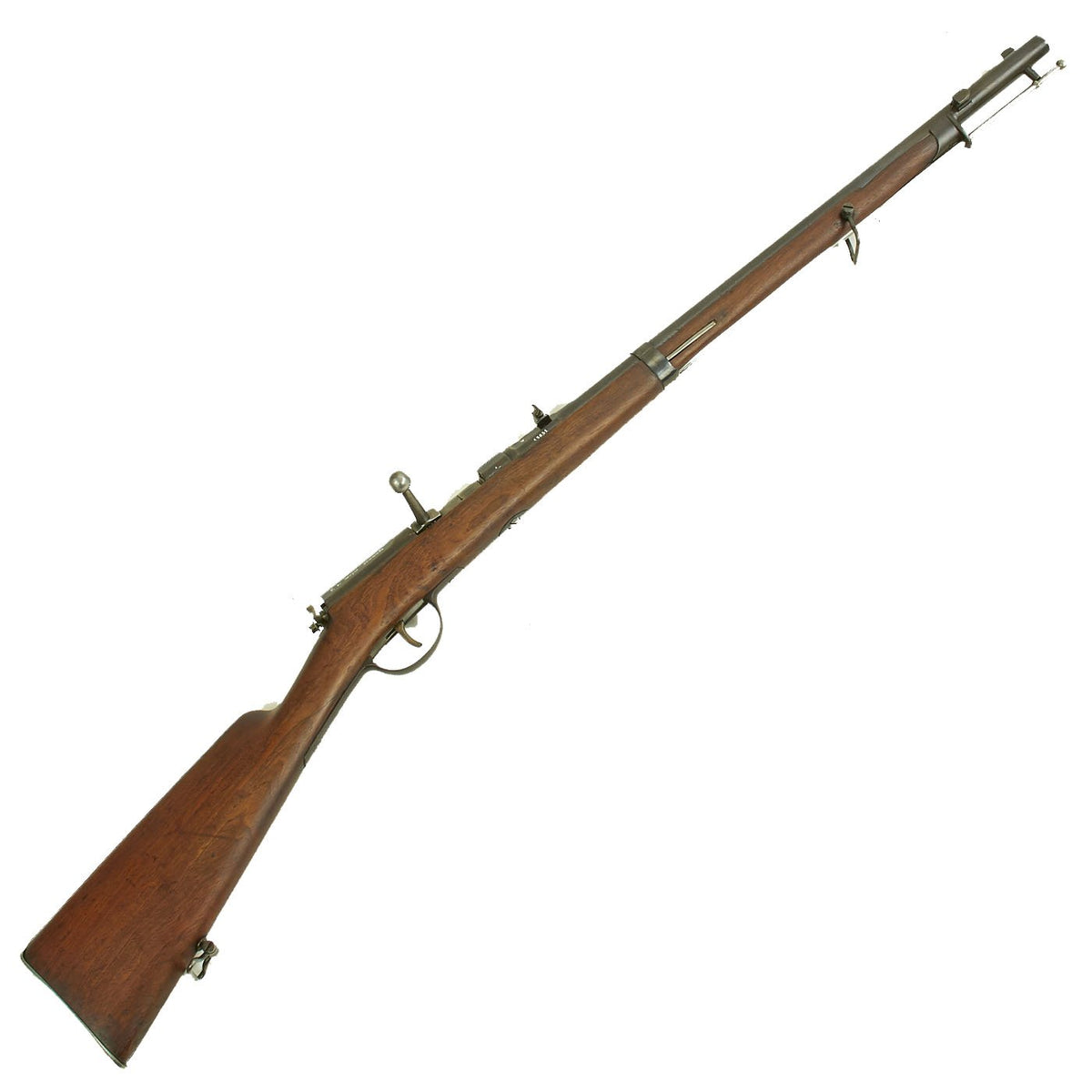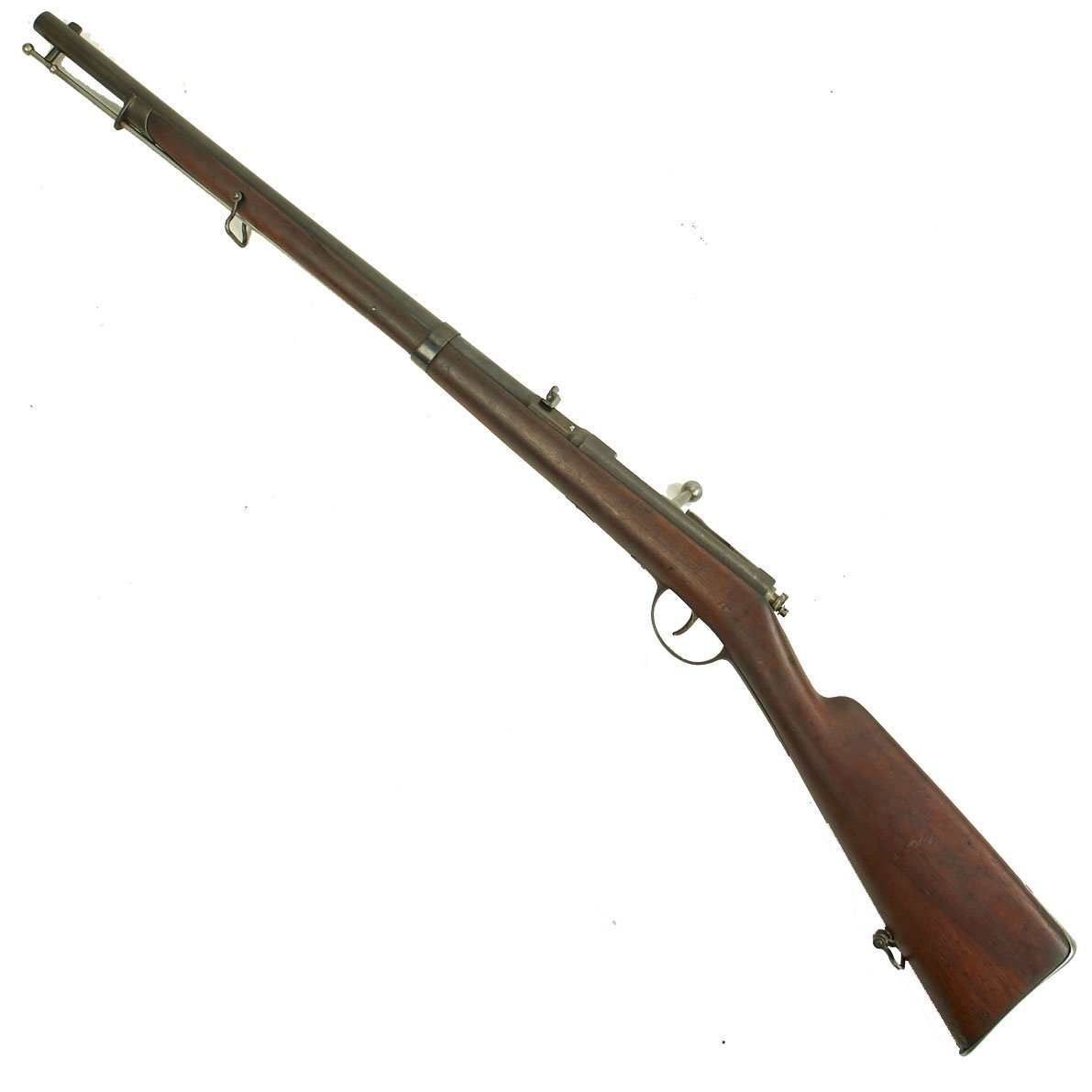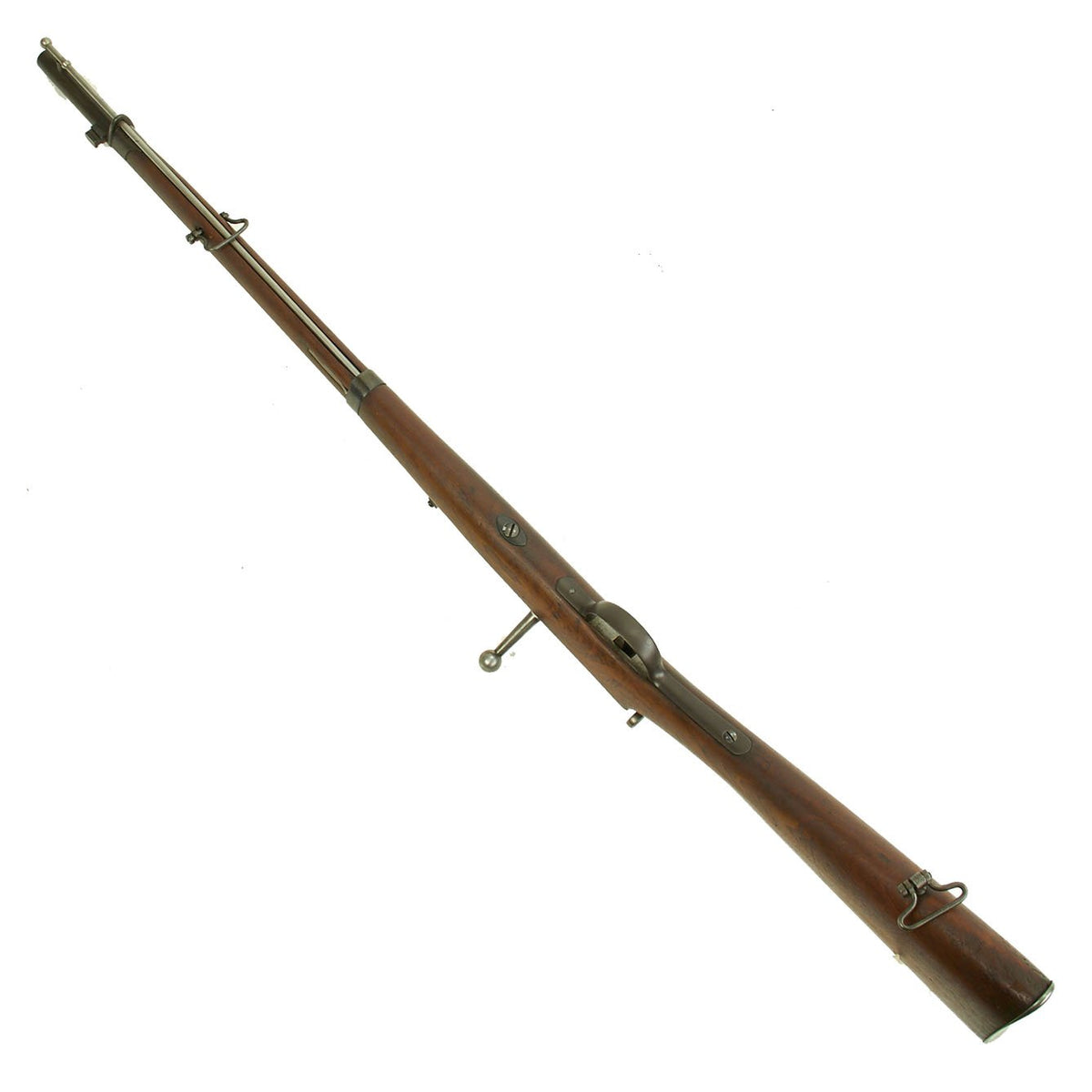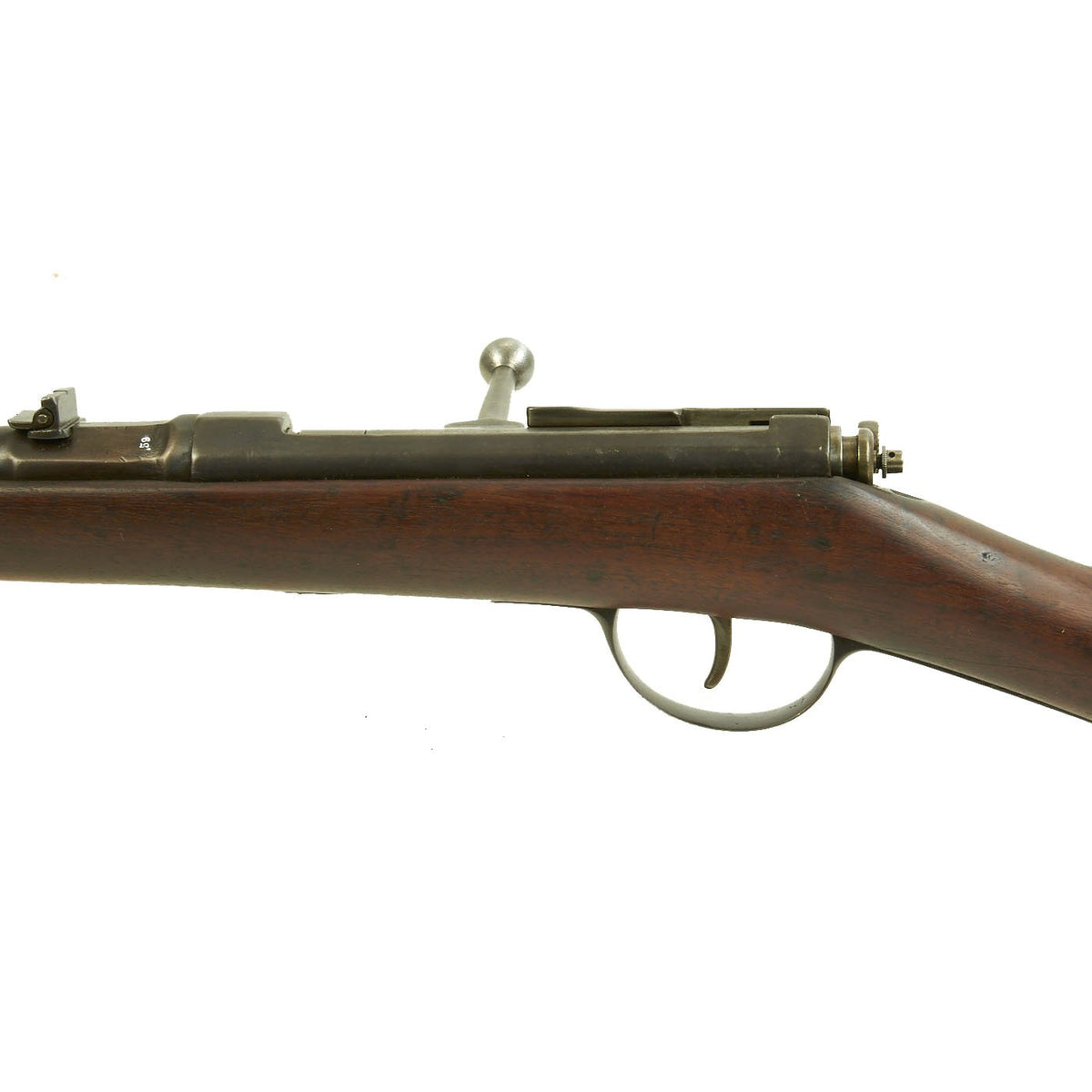Original German Dreyse Zündnadel Needle Fire M1874 Baden Border Guard Rifle made by F. v. Dreyse Sömmerda Original Items
$ 3.495,00 $ 873,75
Original Item: Only One Available. These are really hard to find! In 1836 JOHANN NIKOLAUS VON DREYSE designed this breech loading cartridge system while the rest of the world were still using muzzleloaders. These were called Zündnadelgewehr, which translates roughly as “ignition needle rifle”. These were adopted by the Prussian Military in 1841, and called the leichtes Perkussionsgewehr Modell 1841(“light percussion rifle Model 1841”), with the name chosen to hide the revolutionary nature of the new weapon.
Its first notable service was in the May uprisings in Dresden in 1849. Taking a 15.4mm paper cartridge ignited by a needle projecting from the front of the bolt, the barrel on these is heavily rifled to engage the cartridge. The system was so revolutionary that it was observed that in the Austro-Prussian War of 1866, a Prussian Infantryman could fire five rounds from a prone position in the time it took an Austrian Infantryman to discharge one round from a standing position.
The Zündnadel saw service up through the Franco-Prussian War of 1870-1871, when the Prussians were quickly victorious despite the French Chassepot Needle fire Rifle introduced in 1866, which was considered a far superior weapon. It was this action that brought the German Empire together in 1871, and by this time the Needle Rife rifles were in use by many other German states. The Dreyse Needle Fire was obsoleted in 1871 with the introduction of Paul Mauser’s M1871 bolt action rifle which took what we would think of as conventional brass cased ammunition (10.4mm).
This is a nice example of probably the last Needle Fire rifle produced, as well as the most advanced, the Model of 1874. This particular example has markings consistent with issue to the Customs & Border Guard of the Grandy Duchy of Baden, one of the states of the newly formed German Empire. Unlike previous designs, the M1874 was “self-cocking”, and just moving the bolt would cock the needle. It is marked with serial number 13651 and CROWN / W as see n on other examples of this model. The right side of the receiver is marked F. v. Dreyse Sömmerda, for Franz von Dreyse, the son of the famous inventor and firearms manufacturer Johann Nicolaus von Dreyse. It was he that developed the self-cocking modification to the firing system, almost as a last ditch attempt to prolong the service life of the needle fire design. The father and son had started a gun factory in Sömmerda together, which Franz continued after his father passed in 1867, until his own passing in 1894.
Research shows that these border guards rifles were in the serial number range 13,000 to 14,000, so this example fights right in the middle, with all the correct markings. The gun is in good condition, with a lovely patina, and highlighted markings. The woodwork is sound, though there is a sliver missing from the front right. It has a nice original steel cleaning rod, with an intact cleaning jag on the other end. The needle is still intact, as far as we can see, and protrudes past the bolt face when in the fired position, though some may be missing. The bore is unfortunately very worn, and rifling can no longer be seen.
The butt plate tang is marked B. Z. 4. 13., which is an abbreviation for Baden Zoll (Baden Customs & Border Guards), 4th company, 13th Man. The rifle also comes with a very nice brass muzzle cover.
These are incredibly rare, and this is the first example that we have seen. From looking around these are very seldom encountered. A rare late example of a revolutionary firing system, ready to display.
Specifications-
Year of Manufacture: circa 1874
Caliber: 15.4mm Dreyse
Cartridge Type: Needlefire Cartridge – Lead bullet in Paper Cartridge
Barrel Length: 24 inches
Overall Length: 43 Inches
Action type: Bolt-Action Needle Fire
Feed System: Single Shot
NOTE: International orders of antique firearms MUST be shipped using UPS WW Services (courier). USPS Priority Mail international will not accept these. International customers should always consult their country’s antique gun laws prior to ordering.
Fast Shipping with Professional Packaging
Thanks to our longstanding association with UPS FedEx DHL, and other major international carriers, we are able to provide a range of shipping options. Our warehouse staff is expertly trained and will wrap your products according to our exact and precise specifications. Prior to shipping, your goods will be thoroughly examined and securely secured. We ship to thousands clients each day across multiple countries. This shows how we're dedicated to be the largest retailer on the internet. Warehouses and distribution centres can be located throughout Europe as well as the USA.
Note: Orders with more than one item will be assigned a processing date depending on the item.
Before shipping before shipping, we'll conduct a thorough inspection of the items you have ordered. Today, the majority of orders will be delivered within 48 hours. The delivery time will be between 3-7 days.
Returns
The stock is dynamic and we cannot completely manage it because multiple stakeholders are involved, including our factory and warehouse. So the actual stock may alter at any time. It's possible that you may not receive your order once the order has been made.
Our policy is valid for a period of 30 days. If you don't receive the product within 30 days, we are not able to issue a refund or an exchange.
You can only return an item if it is unused and in the same state as the day you received it. You must have the item in its original packaging.
Related products
Uncategorized
Uncategorized
Uncategorized
Uncategorized
Uncategorized
Armoured Fighting Vehicles of the World: AFVs of World War One (Hardcover Book) New Made Items
Uncategorized
Uncategorized
Uncategorized
Uncategorized
Uncategorized
Armored Burgonet Helmet & Polearm from Scottish Castle Leith Hall Circa 1700 Original Items
Uncategorized
Uncategorized
Uncategorized
Uncategorized
Uncategorized
Uncategorized
Uncategorized
Angolan Rebel 1970s era 60mm Inert Display Mortar from Angolan Civil War Original Items
Uncategorized












































































